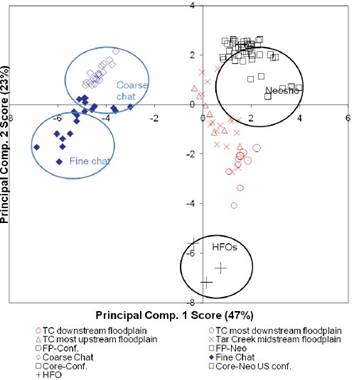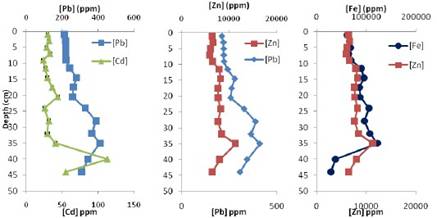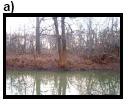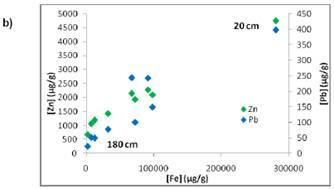Grantee Research Project Results
2008 Progress Report: Exposure Assessment of Children and Metals in Mining Waste: Composition, Environmental Transport, and Exposure Patterns
EPA Grant Number: R831725C002Subproject: this is subproject number 002 , established and managed by the Center Director under grant R831725
(EPA does not fund or establish subprojects; EPA awards and manages the overall grant for this center).
Center: Health Effects Institute (2015 - 2020)
Center Director: Greenbaum, Daniel S.
Title: Exposure Assessment of Children and Metals in Mining Waste: Composition, Environmental Transport, and Exposure Patterns
Investigators: Shine, James P. , Spengler, John D.
Institution: Harvard University
EPA Project Officer: Callan, Richard
Project Period: June 1, 2004 through May 31, 2009 (Extended to May 31, 2011)
Project Period Covered by this Report: June 1, 2008 through May 31,2009
RFA: Centers for Children's Environmental Health and Disease Prevention Research (2003) RFA Text | Recipients Lists
Research Category: Children's Health , Human Health
Objective:
Following the severe flooding event that occurred in Miami in July 2007, we have conducted additional sample collection and analysis to characterize the role of this major disturbance in distributing metals from Tar Creek and Neosho River sediments into the floodplain, including household yard soils and public use areas. We have developed a geochemical fingerprinting approach to characterize the mixing of flood deposit material from metal input sources to the Tar Creek floodplains and residential yards. We have expanded upon our aims to assess the relative spatial and temporal distribution of metals from upstream Tar Creek at the mine waste piles to downstream Neosho River approaching the Grand Lake. We collected sediment cores in Tar Creek and the Neosho River at several locations between the confluence with Tar Creek and Grand Lake. We also compared the relative mobility of Pb and Zn downstream of the source to determine which metal has the greatest potential for impacting areas at large distances from the source. Furthermore, in collaboration with Project 3, we have collectively been assessing the oral in vivo bioavailability and in vitro bioaccessibility of pure-phase Zn minerals and fine grain chat samples.
Progress Summary:









Journal Articles:
No journal articles submitted with this report: View all 6 publications for this subprojectSupplemental Keywords:
children, Native American, tribal, mixtures, lead, PBPK, community, Superfund, intervention, environmental management, environmental management, international cooperation, Scientific Discipline, Waste, Health, RFA, Risk Assessment, Health Risk Assessment, Children's Health, Hazardous Waste, Biochemistry, Hazardous, epidemiology, neurodevelopmental toxicity, developmental toxicity, fate and transport , children's environmental health, mining wastes, human health risk, mining waste, community-based intervention, metal contamination, metal wastes, biological markers, metals, RFA, Health, Scientific Discipline, ENVIRONMENTAL MANAGEMENT, INTERNATIONAL COOPERATION, Waste, Health Risk Assessment, Hazardous Waste, Children's Health, Hazardous, Risk Assessment, community-based intervention, epidemiology, fate and transport , developmental toxicity, Human Health Risk Assessment, neurodevelopmental toxicity, children's environmental health, biological markers, mining waste, metal wastes, metals, human health risk, metal contamination
Progress and Final Reports:
Original AbstractMain Center Abstract and Reports:
R831725 Health Effects Institute (2015 - 2020) Subprojects under this Center: (EPA does not fund or establish subprojects; EPA awards and manages the overall grant for this center).
R831725C001 Metals, Nutrition, and Stress in Child Development
R831725C002 Exposure Assessment of Children and Metals in Mining Waste: Composition, Environmental Transport, and Exposure Patterns
R831725C003 Manganese, Iron, Cadmium, and Lead Transport from the Environment to Critical Organs During Gestation and Early Development in a Rat Model
R831725C004 Metals Neurotoxicity Research Project
The perspectives, information and conclusions conveyed in research project abstracts, progress reports, final reports, journal abstracts and journal publications convey the viewpoints of the principal investigator and may not represent the views and policies of ORD and EPA. Conclusions drawn by the principal investigators have not been reviewed by the Agency.
Project Research Results
Main Center: R831725
63 publications for this center
45 journal articles for this center
